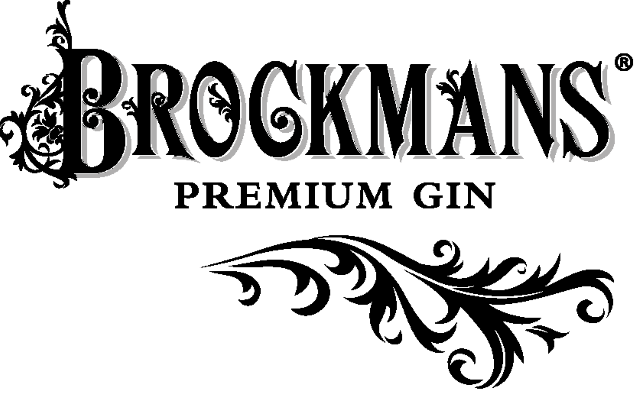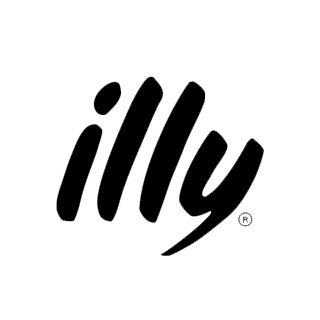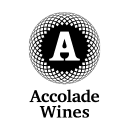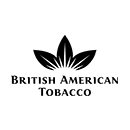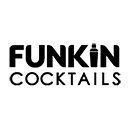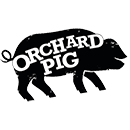Q&A: ROBIN LANGTON OF RIDGEVIEW
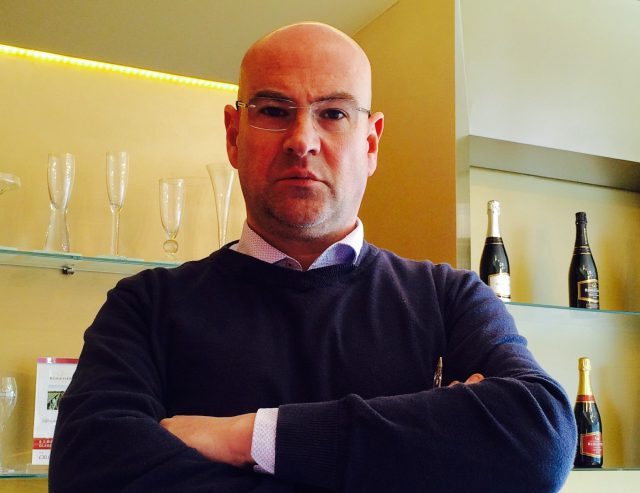
“In the latest of our CEO interviews, Paul Haslam of Cesium Group – in association with the drinks business – speaks with Robin Langton, Chief Operating Officer at Ridgeview Wine Estate.”
 Robin Langton of Ridgeview
Robin Langton of RidgeviewPaul: I understand that you are now focusing your attention on the US market. How are you approaching this?
Robin: We’ve been in a few key states for several years, but now we’ve retained a USA wine market specialist to expand our reach. She’s American and was a portfolio manager with The Henry Wine Group (CA) and Quench Fine Wine (AZ, CO) & Quail Distributing (AZ). She has many years of experience buying and selling fine wine in the USA, so she also has great connections across the country. We are in discussions with three of the big national distributors and about 10 of the main markets directly; that’s where our export focus is. It’s very exciting because ESW is a really hot category in the US. Whereas, just a few years ago it was very much an unknown and there was less interest, now the same gatekeepers are very interested and of course, that’s exciting.
Paul: Which I think leads us nicely to the next question. English sparkling seems to be making a lot of noise at the moment, for example, tastings of Ridgeview with Gordon Ramsay and the Queen at recent banquets. There’s also been some industry chatter that the category’s punching above its weight in terms of profile vs. volume. What’s your view?
Robin: ESW is the first traditional method wine that can beat Champagne’s quality, so it’s a game changer. And whilst some people have seen that quality from the longer-standing English sparkling producers for several years, there has never been enough volume to make the category serious. Now with new producers entering the industry and the existing ones expanding their volume, our total production of 5-6 million bottles per year of top quality fizz becomes commercially interesting. But you have to remember this volume, even if we double it in a few years, is a fraction of Champagne’s c.320million bottles annual production. But ESW’s quality is there and that has led to a lot of interest globally, English Sparkling Wine’s time has come!
Paul: Interesting and a great story to tell from a marketing perspective …we were talking previously about the quintessentially British thing and to what degree that gives the category an edge particularly in the US?
Robin: It’s about two things, the quality of the product (which we have) and then the marketing mix & ESW brand positioning on top. There’s so much love for the Brits in the US, our traditions, history and culture. I think Americans love those things and aspire toward them somewhat. Further, these values are very aligned with ESW and so it’s natural for English sparkling wine to be of interest in that market. We’re the best ally the USA has, so of course they want to buy our brilliant and very English wines!
Paul: Tamara’s been quoted in the press saying that you guys don’t want to be the biggest but you certainly do want to be the best. From some of the research I’ve done it looks as though you have invested significant capex into the winery, the planting, cellar doors. What are your plans for expansion and what does the future look like?
Robin: Ridgeview’s a family business and we’ve always focused on quality and organic growth. Our goal is in 5 years to have a production of about half a million bottles, which isn’t the biggest, but it’s a volume that will mean we can maximise our quality. We’re putting in place a new winery and we’re looking at automation and mechanisation so that we can develop a production infrastructure to support that kind of growth in the next 5 years – and then on to who knows what in the next 10 years. Capex is going into the cellaring and finishing processes to support this. But then there is also investment going into our retail capability, to increase our offering, to improve our cellar door, and have an exciting food and wine offering. All these things will help re-confirm Ridgeview as a place that people can come to, in order to really enjoy themselves and have a wonderful time, to make memories. Ridgeview is a brand that celebrates life, is located in some lovely countryside and is a beautiful place where we have fun times, we want to share that! We’re really trying to take the Ridgeview experience, from vineyard through to production right to the customer. At the moment, our winery’s solid. We’ve got the cellar door and the processing facilities and the front-end capacity to deliver on our expansion plans. It will be great to see many more people coming to visit us and sharing Ridgeview with them.
Paul: Are you focusing on planting up more vines over more hectares? What is the estate sourcing plan? How are you future-proofing model?
Robin: We have a mixture of fruit from our own vineyards and then we have a small shareholder from another family who’s one of our major grape suppliers. This vineyard is co-managed by our vineyard manager and they’re part of our business. Indeed, they have capacity for another 70 acres so they’ll be extending our planting in West Sussex. We’re also looking at a little more diversification. For example, we’re looking at a project in East Sussex to extend vineyard locations, sourcing from different counties to mitigate the English climate we know and love and to allow us to get the best of it. Wherever we source from, we will continue to work with vineyards that have really proven themselves with us or where there’s a history of good quality production. In this way we will have futureproofed ourselves for the next 5 to 10 years as the industry gets bigger.
Paul: Talking futureproofing and looking 5-10 years ahead, does being family-owned enable a business to take a longer range view, without the shareholder pressure or the challenge of rapid returns?
Robin: Yes I’d like to think so, obviously I can’t speak for some of the shareholder-driven companies but our approach is very much based on organic growth. We’re a second-generation family run business which has gone from a small hobby to a commercial business; the second generation bringing in outside experience and professionalism. For example I’m the first hire at a senior level and that has helped us to look forward for the next 5 year growth period and then 10 years beyond. So we’re certainly not looking short term and I think when you’ve examined some of those shareholder owned companies, yes they may grow as fast as they can, because they need the cash flow and they have to look out for shareholder return. You’d hope that they understand that they’re coming to an industry that is long-term. I think as volume increases and there’s some pressure on retail price, potentially in 4-6 years that those companies can maintain those long term views and I’m sure they can. You know, we’ve got a great industry with a diverse group of companies and mixed ownership and that can only be a good thing.
As a family owned operation we use the word sustainability a lot but it’s not just the vineyard. For us sustainability has 3 functions: firstly, there’s sustainability in terms of our environment – how we deal with every part of the environment, with our suppliers, with the actual vineyards. Secondly, there’s sustainability of the people that work for us, so looking at whom you employ and how you retain them. For example when we talk about the people who work for us it’s as part of the family, we’re serious when we take people on; when I was taken on and it was a family decision and I had to fit in. Thirdly whether the business itself is sustainable. I use the term “triple bottom line” but “family values” to me is almost interchangeable. We have them top of mind when we build and develop our business plans. I don’t think many businesses think like this.
Paul: A lot could be addressed by CSR but that can have more of a marketing perspective rather than create longevity. Talking of longevity, we did catch up at ProWein and it was really good to see the English sparkling producers taking more of a category view and as a total producing 5 – 6 million bottles per year. How are the producers combining their efforts and resources to really tackle this collective category view?
Robin: I think ProWein is a great place to start. It’s a brilliant showcase for English sparkling producers. Julia (T-E) does a great job, she’s a champion, and I can’t say enough good things about her. It’s a real asset that English producers come together and put out a strong and united message across the category. You know none of us can do it by ourselves – especially to achieve the required export growth, we need to work together, all of us and really drive the category. Mike (Roberts), the founder of Ridgeview, was chairman of EWP for a long time and he really believed that victory for one of us, is a victory for all of us. That’s foremost, but I think that’s probably just a starting point. I think everybody’s at different stages of development. You’ve got a few people starting to look towards export; we are, and we’re talking to a few others about what we can do together. This positioning is not just as a producer but also vis a vis Champagne and other sparkling wines. Because if you look at the latest brands I think there will be different producers with different strategies, for example I know some of the bigger guys have really targeted the £20 mark with some volume and then some of the new guys are really looking to be premium at the £40 plus mark. I think we need to look at the bigger picture and say where the English sparkling wine category should be. Overall we need to mature and I think everyone needs to stand together and ensure that there is a clear market position that delivers the most it can in terms of range and scope.
Paul: Taking the category view, what other events are you doing together?
Robin: The main thing we do is ProWein, we also do the English Wine Producers Tasting in the UK and there has been some discussion of rolling that out to other countries. I think we’d be up for discussing other events and as I suggested previously – everybody’s got to come to the table.
Paul: We touched on the US export plans and the fact that you lived out there for 6 years. Some of the more recent profile building e.g. the Oscars can only help from a profile building perspective – How did the partnership come about?
Robin: The Oscars partnership came about as a result of the UKTI GREAT campaign that has just received a second round of funding. We became supporters this year, with the launch reception at Lancaster House. It’s a brilliant initiative supporting all areas of UK export, it’s a program that’s good for all UK industry and deserves our support. After that, we were asked if we would like to support the Oscar’s lunch for GREAT and also London Craft Week. We did get some publicity out of the Oscars event but it was just a small lunch for a few people. It’s more important that it’s a good program that reflects our values. We like to partner with those that share our values and help the category and the UK more widely.
Paul: That can only be a good thing. What is your view on Taitinger buying land in the UK, along with LVMH allegedly landbanking in the UK? What’s your view on the big champagne houses making these sorts of moves?
Robin: I think it’s great that Taittinger recognises the quality of ESW and I know there are several other Champagne houses looking at land in the UK. It recognises the quality that we know is here currently, but I think it also rings loud warning bells for ESW producers. We alluded to a couple of things earlier. Sparkling wine from the rest of the world and in most commercial markets is a stepping stone, from Cava, Prosecco, NZ, USA Sparkling Wine, up to Champagne. When one hectare of vineyard in Champagne costs one million Euro but one hectare in the UK costs £10-20,000 it makes sense too. The return on investment that a champagne house can make in the UK is 300% greater than Champagne. So a Champagne house can come into the UK, sell ESW at a lower price, receive lower margin but make higher return on investment. They also increase their brand awareness, their brand equity and really fill that gap to Champagne, taking all of the thunder out of English sparkling wine and making it merely another sparkling stepping stone to Champagne. I strongly feel that ESW producers need to address the entire Champagne category. Entry level champagne is £20-30 if you ignore below cost wines in the discounters but nearly all English sparkling wine is £20-40. All English sparkling wine is virtually within that price band, this is the problem. I think ESW needs to position itself more broadly, from the entry level right to the top; we should make wines from £20 to £150 plus– just as Champagne does. I think it’s great that Champagne houses recognise our quality and the potential of production here but their goal will be good financial returns at the £20-£30 whilst protecting their core brand and maintaining Champagnes position as the jewel in the sparkling crown! I think that they want Champagne to be alone at the top and we need to make sure that doesn’t happen.
Paul: Makes a huge amount of sense. Which brings us very nicely to the next question in terms of consumer profile and consumption occasion. How do you see shopping behaviour and consumption behaviour – what similarities and differences do you see between champagne and English sparkling wine?
Robin: In terms of the consumer profile I think generally a similar one. English sparkling wine consumers are a subset of Champagne consumers, just because champagne is 100 times the volume, has been around for so many more years, has bigger market penetration and reach, but is also, arguably the best wine brand in the world. However, I think we’re talking about the affluent consumer, that likes to enjoy themselves, that’s into food and wine and that’s why I’d say it’s a subset with big similarities. I think the differences in terms of consumer are maybe that the English sparkling wine consumer is patriotic in a good way, generally likes English things, salmon, British craftsmanship, luxury goods, locally farmed food etc etc. They are loyal and so are inclined to be interested. We also need to root out those people that don’t know us yet. We share most of the occasions with Champagne like Birthdays, Christmas, all the same things that people celebrate the world over. But, I do feel that when it comes to the really big occasion ESW might lose out. On the shelf or the tablet, price is still the most significant indicator of quality for the consumer. When you go to Waitrose and you look at the options, the English sparkling wine is £20-40. Champagne at the lower end is £20-30, but Champagne also has wines in the £50s and £60’s right to up to £150 on shelf. So when it comes to a big, big occasion, you know the birth of a child, the promotion or new job, many people still buy Champagne. English sparkling wine has to address that, we have to position the brand to mean luxury and celebration for every occasion. So, I think we have same consumer, but slightly different buying behaviour. Simply put, it’s Prosecco for everyday drinking, English for the weekend with friends, Birthdays etc. But for the really big occasions, I fear people still go Champagne. And we can and must change that.
Paul: We talked about pricing in the off-trade. What role does the on-trade play in English sparkling wine?
Robin: I think there’s potential in the on-trade. When we’re out with distributors I notice that we come in just above high-end Prosecco that hasn’t got an awful lot of value for the consumer. So a small step-up in price can give them much more fun and a really great experience. We need to ensure this opportunity is given to the consumer every time they have this choice to make. If they have a lovely time with a wonderful ESW, they will remember the venue and the wine and choose them again! The on-trade is a natural stepping stone, where we can bring new consumers into ESW with the help of the brilliant, talented and engaged sommeliers we have in the industry today. In terms of the on-trade we’re looking for the excellent somm’s that are out there, to take our product and to champion it; and we see that a lot with many that we work with. When they understand English sparkling wine and the quality it has and the fact that it often beats Champagne, they are happy to take the lead. This support from the on-trade is a really great way to bring people into the category; showing that ESW is a wine for every celebration and occasion.
Paul: As production of ESW grows how can you ensure that the product retains a premium position?
Robin: I think as volume grows there’s a risk that price drops. To combat this we need to retain and communicate the values that English sparkling wine has – aspiration, celebration, occasion and unique quality. But we need to drive those aspirant values and the inherited tradition of England and English sparkling wine production. Did you know that sparkling wine production started in the UK with Christopher Merret – not in Champagne! It’s an English process – He used molasses for the secondary fermentation in bottle before Champagne, before stronger English bottles were taken to Champagne and that’s how the production process started. We need to communicate that we’ve got incredible history and heritage and craftsmanship. That’s one of the reasons why we are supporting London Craft Week this May. London Craft Week is a recognition of the great jewellers, gunsmiths, artists, perfumers and many other craftsmen we have in this country. It showcases the wonderful quality and skills we have, which matches ESW’s values and qualities perfectly.
Paul: So looking forward from here, how do you see the sparkling category evolving in the next 5-10 years? We’ve touched on some points around premiumisation, but what are the other trends you foresee?
Robin: Honestly, it’s crystal ball territory. However I hope that in 10 years some of the thousands of Prosecco aficionados will finally be getting bored of this generic ambrosia and will be falling in love with EWS! Unfortunately, Cava will be stuck in corner shops and commodity Champagne will continue to be slowly murdered by the discounters. At the premium end of the market, English sparkling wine will be the automatic choice of discerning consumers, quality grocers and the favourite at your special restaurant. Ridgeview will of course continue to be an innovative category leader, the best, but not the biggest!
Paul: What else should we expect from Ridgeview?
Robin: Ridgeview is an English family business, dedicated to quality, pioneering ESW. These values will continue to drive our business in the future. We will be a global, niche, luxury brand. We want Ridgeview wines to be available for people to enjoy and to share their happiness with loved ones from Barbados to New York! We will grow in scale, but remain focussed on quality over quantity. Of course, we will support the category wherever we can, and do our best to ensure ESW fulfils its potential.
Ridgeview has a brilliant, wonderful wine for every celebration and every occasion. We want to enable our customers to experience our wines and the joy they bring wherever they are; at the cellar door when they come to see us, or at their own table or in their favourite restaurant.



